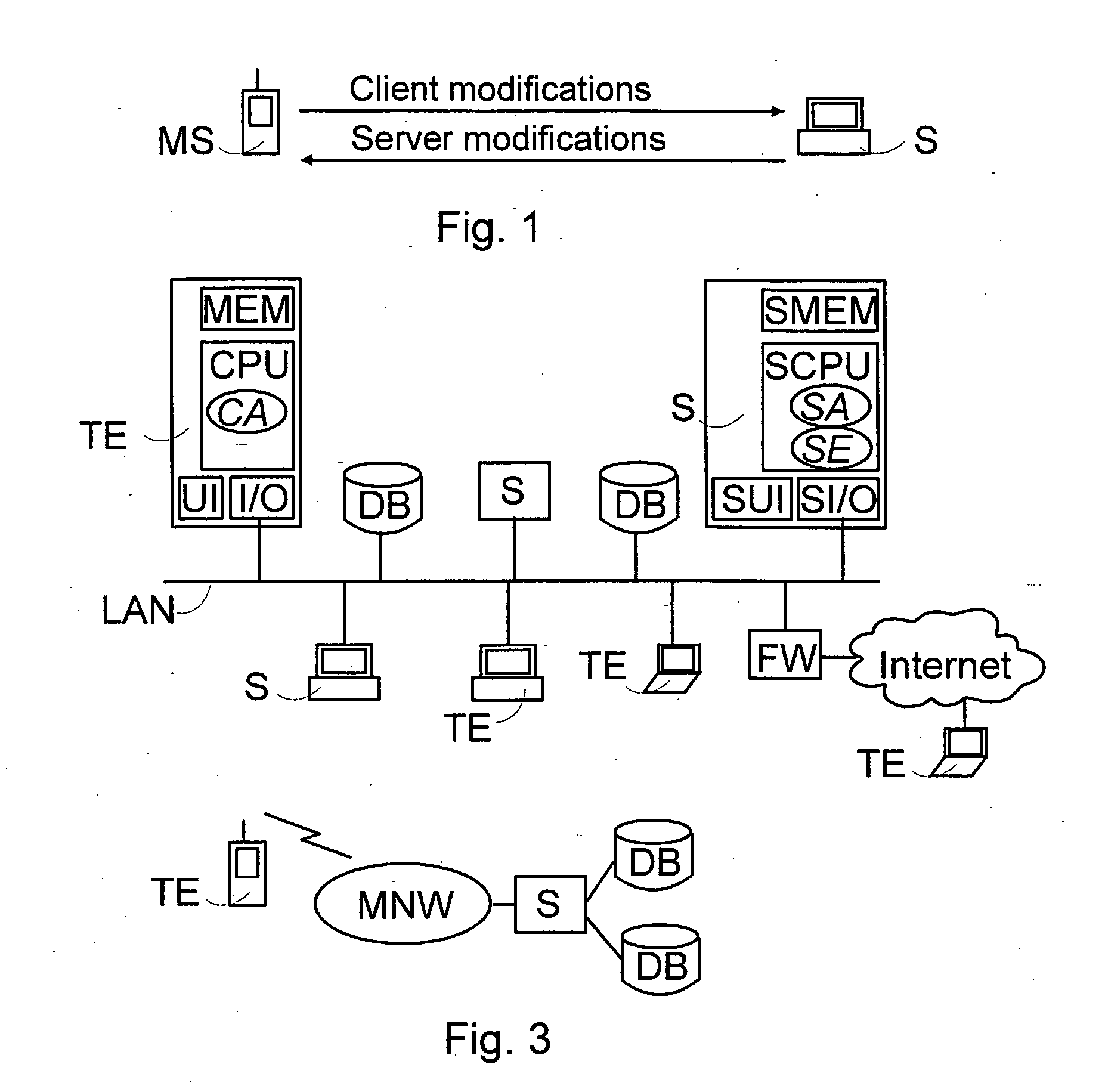Synchronization of database data
a database and data technology, applied in the field of synchronization of database data, can solve the problems of limiting the use of terminals or data types, affecting the stability of the database, so as to avoid the disadvantages of synchronization, the effect of minimizing unnecessary slow synchronization
- Summary
- Abstract
- Description
- Claims
- Application Information
AI Technical Summary
Benefits of technology
Problems solved by technology
Method used
Image
Examples
Embodiment Construction
[0021] In the following, the preferred embodiment of the invention will be described in a system supporting the SyncML standard without limiting the invention thereto.
[0022]FIG. 3 illustrates a networked system where data of databases DB and terminals TE can be synchronized. In respect of synchronization the terminal TE functions as a client device. FIG. 3 shows two examples. In the first one there are terminals TE, databases DB and synchronization servers S connected to a local area network LAN. The terminal TE connected to the network LAN comprises a functionality for communicating with the devices of the network LAN, e.g. a network card and software which controls data transmission. The local area network LAN can be a local area network of any type and the TE can also communicate with the server S via the Internet, typically using a firewall FW. In the second example a terminal TE, a synchronization server S and databases DB are connected to a mobile network MNW. The terminal TE...
PUM
 Login to View More
Login to View More Abstract
Description
Claims
Application Information
 Login to View More
Login to View More - R&D
- Intellectual Property
- Life Sciences
- Materials
- Tech Scout
- Unparalleled Data Quality
- Higher Quality Content
- 60% Fewer Hallucinations
Browse by: Latest US Patents, China's latest patents, Technical Efficacy Thesaurus, Application Domain, Technology Topic, Popular Technical Reports.
© 2025 PatSnap. All rights reserved.Legal|Privacy policy|Modern Slavery Act Transparency Statement|Sitemap|About US| Contact US: help@patsnap.com



